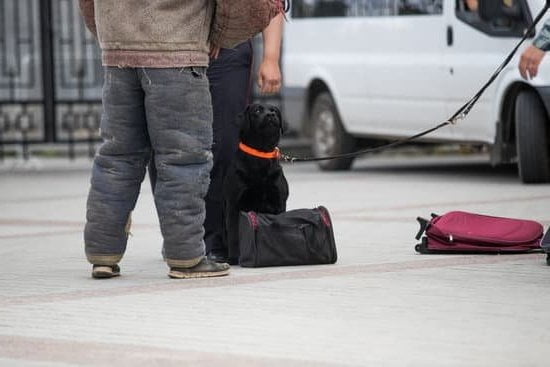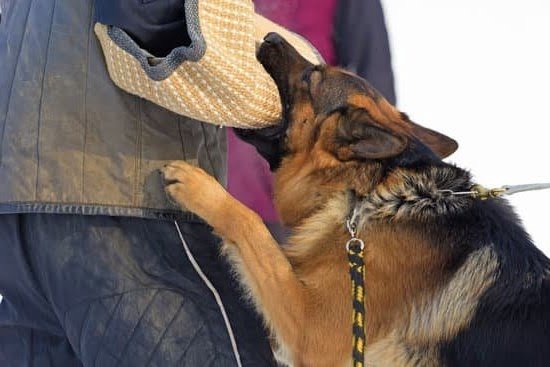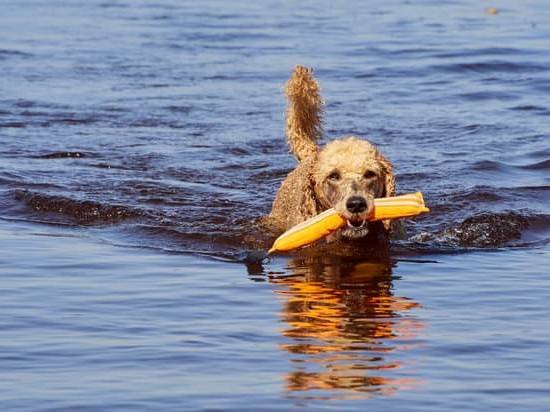Flying can be a stressful experience for many people, but what about those individuals who rely on service dogs? Can a service dog in training accompany their owner on a flight? This article aims to explore the possibility of flying with a service dog in training and shed light on the regulations, policies, and considerations associated with air travel for these invaluable companions.
Service dogs play a vital role in the lives of individuals with disabilities or medical conditions. They provide physical assistance, emotional support, and enhance independence and quality of life. However, these remarkable animals undergo extensive training to ensure they can effectively perform their duties. So, is it safe and permissible for them to fly while still in training?
In this article, we will delve into the importance of service dogs and their training process. We will also address common myths and misconceptions surrounding flying with service dogs in training, examining whether or not they can be allowed on flights. Furthermore, we will provide an overview of major airline policies regarding service dogs in training.
Join us as we navigate through the legal aspects of flying with service dogs in training and outline essential steps and precautions to prepare your four-legged companion for air travel. Additionally, we will offer tips for ensuring a smooth journey both through airport security checkpoints and during the flight itself.
So, if you’re an individual with a service dog in training or simply interested in learning more about traveling by air with these incredible animals, keep reading. This article aims to empower you with knowledge and practical insights to navigate air travel safely and responsibly with your lovable companion by your side.
Understanding the Importance of Service Dogs and their Training Process
Service dogs play a crucial role in the lives of individuals with disabilities, providing assistance and support in various tasks. These highly trained animals are essential for their handlers’ independence and wellbeing. However, it is important to understand the importance of service dogs and their training process before considering flying with them.
Service dogs undergo extensive and specialized training to perform specific tasks that mitigate their handler’s disability. They are taught skills such as guiding individuals with visual impairments, alerting those with hearing loss to important sounds, or even detecting medical emergencies like seizures or low blood sugar levels. The training process involves obedience training, socialization, and task-specific training to ensure that the dog can perform its duties reliably and safely.
Flying can be a stressful experience for any dog, let alone a service dog in training. It is crucial to consider whether your service dog is ready for the challenges presented by air travel. Factors such as the dog’s temperament, behavior in crowded and confined spaces, and ability to remain calm amidst various stimuli should be taken into account. Additionally, it is important to assess the impact that flying may have on your service dog’s ongoing training process.
As an individual with a disability or someone in need of a service dog in training, it is vital to have a clear understanding of the capability and limitations of your four-legged companion. Assessing these factors will help you make an informed decision about whether flying is appropriate at this stage of your service dog’s development. Remember that safety, comfort, and well-being should always be prioritized when considering air travel with a service dog in training.
| Statistical Data | Fact |
|---|---|
| The number of disabled individuals in the United States who use a service animal. | 500,000+ |
| The average duration of service dog training. | 2 years |
| The percentage of successful service dog candidates from training programs. | 50% |
| The number of different tasks a service dog can be trained to perform. | Over 40 |
Can Service Dogs in Training be Allowed to Fly? Debunking Common Myths and Misconceptions
Service dogs play a crucial role in assisting individuals with disabilities, providing them with much-needed support and independence. However, there is often confusion surrounding whether service dogs in training are allowed to fly. In this section, we will debunk common myths and misconceptions regarding flying with service dogs in training.
One common myth is that only fully trained service dogs are permitted on flights. This is not true. Many airlines allow service dogs in training to fly as long as they meet certain requirements. These requirements may vary from one airline to another, so it is important to familiarize yourself with the specific policies of the airline you plan to travel with.
Another misconception is that service dogs in training must be able to perform all tasks before they can fly. While it is beneficial for the dog to have some basic training, such as obedience commands and socialization skills, they do not need to be fully trained before flying. The purpose of allowing service dogs in training on flights is to expose them to different environments and experiences as part of their training process.
It’s important to note that although many airlines allow service dogs in training on flights, emotional support animals (ESAs) typically do not have the same privileges. ESAs are not considered service animals under the Americans with Disabilities Act (ADA), and therefore may not be allowed on flights or may require additional documentation.
| Airline | Policy on Service Dogs in Training |
|---|---|
| Delta Air Lines | Allows service dogs in training onboard if certain conditions are met. |
| American Airlines | Allows service dogs in training onboard if certain conditions are met. |
| United Airlines | Allows service dogs in training onboard if certain conditions are met. Require prior notification and documentation. |
It’s essential to check with your specific airline for their policies and any additional requirements they may have. Remember, it is always best to be prepared and have all necessary documentation when traveling with a service dog in training. By understanding the truth behind common myths and misconceptions, individuals can confidently navigate air travel with their service dogs in training, ensuring a safe and comfortable journey for both themselves and their four-legged companions.
Highlighting Airline Policies
Many individuals who rely on service dogs or are in the process of training a service dog may wonder about the possibility of flying with their dog. Understanding airline policies regarding flying with service dogs in training is a crucial step in ensuring a smooth and stress-free travel experience. In this section, we will provide a comprehensive overview of major airlines’ stance on flying with service dogs in training.
It’s important to note that while some airlines do allow individuals to fly with service dogs in training, others may have specific requirements or restrictions. To help you navigate through this process, we have compiled a list of major airlines and their policies regarding flying with service dogs in training:
- Delta Airlines: Delta Airlines allows individuals to fly with service dogs in training as long as they comply with the airline’s requirements. This includes providing documentation such as a letter from a licensed mental health professional and proof of health vaccinations for the dog.
- American Airlines: American Airlines also permits individuals to travel with service dogs in training. However, they require proper documentation and advance notice before the flight. It’s important to check their website or contact them directly for specific details.
- United Airlines: United Airlines allows passengers to travel with service dogs in training as long as they meet certain criteria outlined by the airline. This includes providing necessary documentation, ensuring proper behavior and hygiene of the dog, and adhering to all safety regulations.
It’s worth mentioning that each airline may have slightly different requirements and policies when it comes to flying with service dogs in training. Therefore, it is crucial to thoroughly review these policies before booking your flight. Additionally, it is advisable to contact the airline directly if you have any specific questions or concerns regarding your particular situation.
By understanding and following these guidelines set out by various airlines, individuals can ensure a smooth and hassle-free journey while traveling with their service dog in training.
Navigating the Legal Aspect
When it comes to flying with service dogs in training, it is essential for individuals and trainers to understand the laws and regulations surrounding this topic. These legal guidelines aim to ensure the safety of both passengers and animals during air travel.
One important law to be aware of is the Air Carrier Access Act (ACAA). Under this federal law, service animals are allowed on airplanes free of charge, regardless of their training status. This means that individuals have the right to fly with their service dogs in training, as long as they meet the requirements set by the ACAA.
However, it is important to note that while the ACAA guarantees access for service dogs in training, airline policies may vary. Some airlines may require specific documentation or proof of training progress before allowing a service dog in training on board. It is crucial for individuals to familiarize themselves with these policies and prepare accordingly.
To navigate these legal aspects effectively, here are some key steps and precautions to consider:
- Research airline policies: Check the specific requirements and documentation needed by each airline before booking a flight. Make sure to comply with all necessary regulations.
- Communicate in advance: Reach out to the airline prior to your departure date to inform them about your intention to travel with a service dog in training. This will help avoid any last-minute complications.
- Carry relevant documents: Ensure you have all necessary paperwork with you, including identification cards for both yourself and your service dog, medical records (if applicable), and proof of ongoing training or affiliation with a recognized organization.
By understanding and adhering to the laws and regulations surrounding flying with a service dog in training, individuals can ensure a smooth and hassle-free experience during air travel. It is important to stay informed about any updates or changes in these legal guidelines as they may vary from time to time or across different regions or airlines.
Preparing Your Service Dog in Training for Air Travel
Flying with a service dog in training requires careful preparation and consideration to ensure a smooth and stress-free experience for both you and your canine companion. Here are the essential steps and precautions to take when preparing your service dog in training for air travel.
Firstly, it is crucial to familiarize your service dog in training with the sights, sounds, and environment commonly encountered at airports. Exposing your dog to these situations can help reduce anxiety and increase their comfort level during the journey. Visit local airports or simulated airport environments where your dog can practice navigating through crowds, loud noises, security checkpoints, and confined spaces such as airplanes.
Another important step is proper crate training. It is essential that your service dog feels safe and secure in their crate during the flight. Begin crate training well in advance of your travel date, gradually increasing the length of time your dog spends inside the crate. Additionally, make sure their crate meets airline regulations regarding size, ventilation, and security features.
Before traveling by air, ensure that your service dog’s health records are up-to-date. Schedule a visit with your veterinarian to verify that all vaccinations are current. Airlines may require proof of updated vaccinations before allowing a service dog on board. It is also recommended to obtain health certificates from your veterinarian certifying that your service dog is fit to fly.
Furthermore, consider how flying might affect your service dog’s overall well-being. Long flights can be physically demanding for both humans and animals alike. Take into account factors such as hydration needs, bathroom breaks, feeding schedules, exercise routines, and any medications or supplements that may need to be administered during the trip.
By taking these essential steps and precautions, you can ensure that you are fully prepared for air travel with your service dog in training. Remember to research specific airline policies beforehand to understand any unique requirements they may have regarding documentation, advance notice, or additional fees. With proper preparation, you can help make the journey a positive and successful experience for both you and your service dog in training.
Tips for Ensuring a Smooth and Stress-free Flight with Your Service Dog in Training
Flying with a service dog in training can be a rewarding experience, but it also requires careful preparation and consideration. Here are some tips to help ensure a smooth and stress-free flight for both you and your service dog in training.
Plan Ahead
Before your flight, it is important to plan ahead and inform the airline about your service dog in training. Each airline has their own policies and procedures when it comes to flying with service dogs in training, so make sure to familiarize yourself with these guidelines beforehand. Additionally, check if any documentation or paperwork is required and ensure that all vaccinations and health checks are up to date.
Crate Training
Crate training is essential when flying with a service dog in training. Familiarize your dog with the crate well before the flight by gradually introducing them to spending time inside it. Use positive reinforcement techniques such as treats and praise to make the crate a positive space for your dog. This will help them feel more comfortable during the flight.
Exercise Before the Flight
Providing ample exercise before the flight can help your service dog in training stay calm during travel. Take them for a long walk or engage in active playtime to release any excess energy they may have. A tired dog is more likely to relax during the flight.
Bring Essential Supplies
Ensure that you have all necessary supplies for your service dog in training during the flight. This includes items such as water bowls, food, treats, poop bags, and any medication they may need during travel. It’s also recommended to carry an absorbent pad or towel in case of accidents.
Stay Calm and Positive
During the flight, maintain a calm demeanor which can help your service dog in training feel at ease. Remember to use positive reinforcement techniques and reward good behavior throughout the journey. Creating a positive association with flying will make future trips more enjoyable for both you and your service dog in training.
By following these tips, you can help ensure a smooth and stress-free flight with your service dog in training. Remember to always prioritize the comfort and well-being of your dog, and be prepared to adapt to their needs during travel. With careful planning and preparation, you can create a positive flying experience for both you and your service dog in training.
What to Expect During Airport Security Checkpoints
Navigating airport security checkpoints can be a daunting task for anyone, especially when traveling with a service dog in training. However, with proper preparation and knowledge of the process, you can ensure a smooth and hassle-free experience for both you and your furry companion.
When going through airport security, it is important to remember that service dogs in training are afforded the same rights as fully trained service dogs under the Americans with Disabilities Act (ADA). This means that they are permitted to accompany their handlers throughout the airport, including security checkpoints.
To make the security screening process easier, it is essential to properly prepare your service dog in training beforehand. This includes ensuring that your dog is wearing an easily identifiable vest or harness, as well as having all necessary documentation readily available. It is also helpful to inform the Transportation Security Administration (TSA) officers that your dog is a service dog in training so they can provide appropriate assistance and accommodations.
During the screening process, you can expect to go through the same procedures as other passengers. This may include walking through a metal detector or undergoing additional screening methods such as a pat-down or swab test. It is important to remain calm and cooperative during this process, as any signs of agitation from you or your dog could lead to delays or further inspection.
In some cases, TSA officers may request to visually inspect your service dog in training or subject them to additional screening methods. However, they should never separate you from your animal without permission and should handle them with care and respect. If you encounter any issues or feel that your rights are being violated during the security checkpoint process, it is important to speak up and ask for a supervisor.
By understanding what to expect during airport security checkpoints and taking proactive steps to prepare yourself and your service dog in training, you can help ensure a smooth journey through air travel. Remember to stay informed about airline policies specific to service dogs in training and familiarize yourself with any additional requirements or restrictions that may apply.
With proper planning and preparation, you can navigate airport security checkpoints with confidence and ease, allowing you and your service dog in training to travel safely and responsibly.
Tales from the Sky
Flying with a service dog in training can be a unique and sometimes challenging experience. However, many individuals have successfully navigated air travel with their service dogs in training, and their stories can provide valuable insights for others facing similar situations.
The Importance of Proper Preparation
One common theme among those who have flown with service dogs in training is the importance of thorough preparation. From ensuring that your dog is comfortable wearing their vest or harness, to acclimating them to the sights and sounds they will encounter at the airport, preparation is key. This includes exposing your dog to different environments and training scenarios prior to the flight to help them feel more at ease during travel.
Positive Experiences and Encounters
Many individuals flying with service dogs in training have reported positive experiences during their journeys. Flight attendants and fellow passengers are often understanding and accommodating when they see someone traveling with a service dog in training. Several stories highlight how flight attendants would offer water for the dog or even go out of their way to find a quieter space on the plane for both the handler and their canine companion.
Challenges Faced
While positive experiences are prevalent, there are also challenges that individuals have faced when flying with service dogs in training. One common challenge is dealing with other passengers who may not understand the role of a service dog. Some individuals have encountered skepticism or even hostility from fellow travelers who question why a dog in training is allowed on the plane without being fully trained yet.
Additionally, navigating security checkpoints can be a source of stress for some handlers. Ensuring that proper documentation and identification tags are readily available can help streamline this process and minimize potential difficulties.
Conclusion
In conclusion, it is indeed possible for individuals with service dogs in training to fly. While there may be myths and misconceptions surrounding this topic, it is important to debunk them and understand the rights and regulations that protect the rights of those with service dogs. By providing a comprehensive overview of major airlines’ policies and navigating the legal aspects, this article has aimed to empower individuals to navigate air travel safely and responsibly.
Preparing your service dog in training for air travel requires careful planning and consideration. From ensuring their comfort during the flight to following necessary precautions, it is crucial to prioritize their well-being. Tips such as familiarizing your dog with their travel carrier, following a routine before the flight, and easing any anxiety they may feel can all contribute to a smooth and stress-free journey for both you and your service dog.
Additionally, it is important to be aware of what to expect during airport security checkpoints. Understanding the protocols in place will help you prepare beforehand, undergo security checks seamlessly, and avoid any unnecessary hassle or delays. By being informed about these procedures, you can ensure a hassle-free experience for yourself and your service dog.
Real-life experiences shared by individuals who have flown with service dogs in training also provide valuable insights into what one can expect while traveling by air. These stories shed light on the challenges faced but also highlight the positive outcomes that can arise from advocating for your rights as an individual with a disability accompanied by a service dog.
Overall, this article aims to empower individuals with service dogs in training throughout their journey of air travel. By debunking myths, highlighting airline policies, discussing legal aspects, providing essential steps for preparation, offering tips for stress-free flights, informing about security procedures at airports, and sharing real-life experiences; we hope this article equips you with the knowledge needed to navigate air travel safely and responsibly with your beloved service dog in training.
Frequently Asked Questions
How strict are airlines about service dogs?
Airlines are generally quite strict when it comes to service dogs. They have specific guidelines and policies in place to ensure the safety and comfort of all passengers, including those with disabilities who rely on service animals. These guidelines often include requirements such as proper documentation, advanced notification, and adherence to certain behavioral standards for service dogs.
The airline staff may ask for proof of the dog’s training or certification, as well as require it to be properly harnessed or leashed during the flight. It is important for individuals with service dogs to familiarize themselves with each airline’s specific policies beforehand to avoid any issues or surprises.
What airlines can service dogs fly?
Most major airlines allow service dogs to fly alongside their owners. However, it is essential to check with the specific airline before booking a flight, as policies may vary slightly between companies.
Generally, airlines will accept service dogs regardless of breed or size, given that they are trained to perform tasks related to a disability and meet other necessary criteria set by the airline. Some airlines might also require additional documentation or advance notice before allowing a service dog onboard, so it is crucial for passengers traveling with service animals to thoroughly research the policies of their chosen airline.
Can my service dog fly internationally with me?
Yes, in most cases, you can bring your service dog with you when flying internationally. However, similar to domestic flights, each country and airline might have its own regulations and requirements regarding traveling with service animals. It is crucial for individuals planning international travel with their service dog to research and comply with these regulations beforehand.
Some countries may request specific documentation or impose quarantine periods upon arrival for service animals entering their borders. Working closely with the airline and researching the destination country’s regulations will help ensure a smooth travel experience when bringing a service dog internationally.

Welcome to the blog! I am a professional dog trainer and have been working with dogs for many years. In this blog, I will be discussing various topics related to dog training, including tips, tricks, and advice. I hope you find this information helpful and informative. Thanks for reading!





